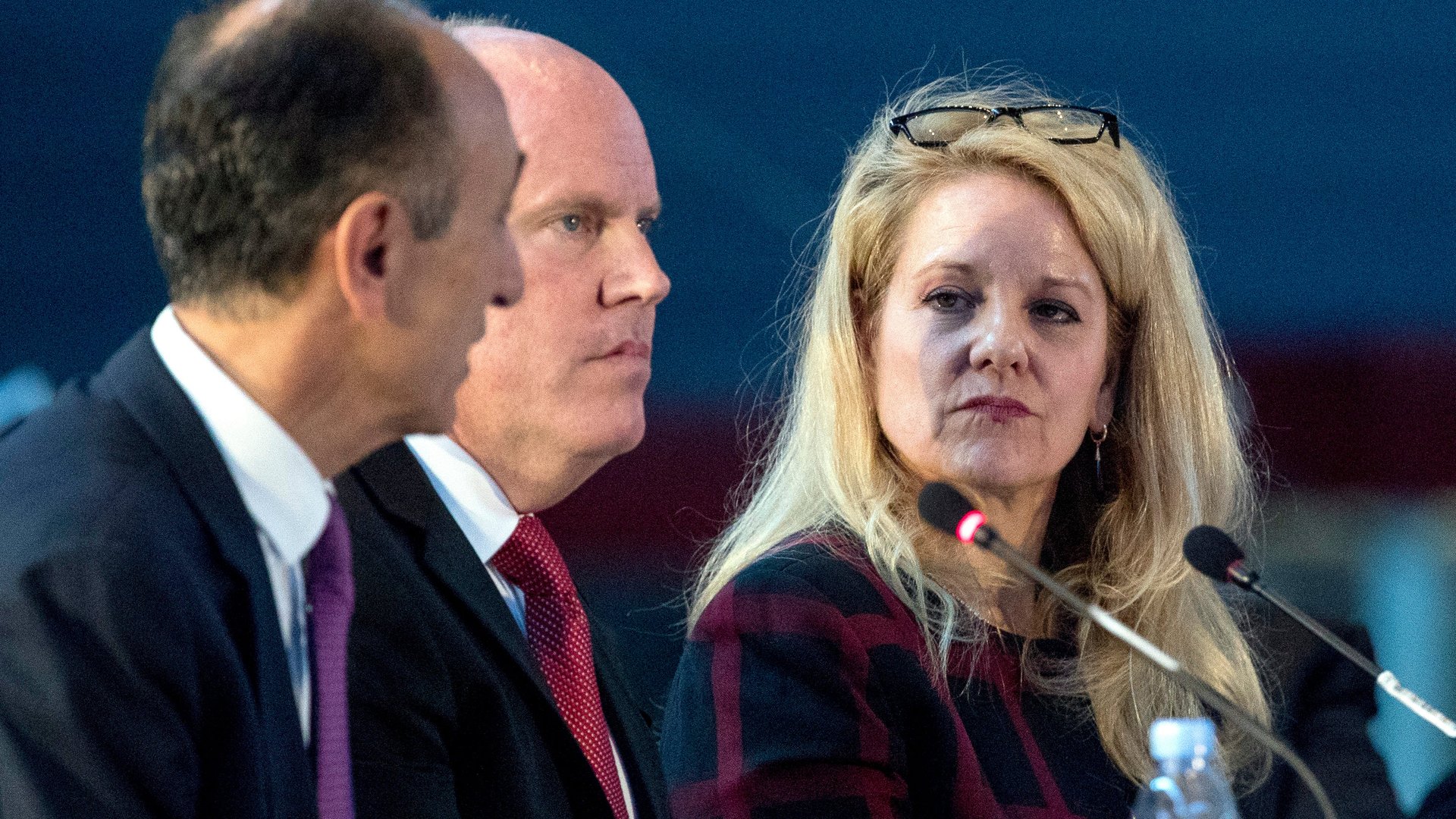Why SpaceX will take its Starlink satellite business public
SpaceX president Gwynne Shotwell told a crowd of investors in Miami that her company could spin out its nascent satellite internet division in an initial public offering.


SpaceX president Gwynne Shotwell told a crowd of investors in Miami that her company could spin out its nascent satellite internet division in an initial public offering.
“Right now, we are a private company, but Starlink is the right kind of business that we can go ahead and take public,” Shotwell said in remarks first reported by Bloomberg. A SpaceX official confirmed to Quartz that the company is considering a spinoff of Starlink in the years ahead.
Starlink is the largest constellation of commercial satellites. It currently contains some 240 satellites in low-Earth orbit, most of which are orbiting 340 miles (550 km) above our heads. Thousands more satellites are expected to be added to the network in the coming years.
SpaceX founder Elon Musk says the satellites eventually will provide broadband connectivity around the world; the US Air Force already is piloting the technology to connect with its fighter jets.
Starlink is unlikely to become a public entity in the near future. For one, the network is still being deployed and won’t be operational until mid-year. Then, SpaceX needs to demonstrate that it can actually provide good, reliable service—and while handing off the signals between users below and multiple satellites whipping around the Earth at 17,000 mph is technically feasible, it isn’t exactly easy.
But an eventual spinout of Starlink makes sense for several reasons.
SpaceX has been privately held since its founding nearly two decades ago. Many of its employees, not to mention venture capital funds and institutional investors, are eager to realize their share of its successes. Yet Musk has consistently said he will not take the company public until it is on the way to Mars, to protect its aggressive methods from the scrutiny and second-guessing of public markets, especially as it begins the risky work of flying humans into space. Spinning off the satellite network could help solve that problem.
Indeed, Starlink is designed to provide the financing for Musk’s dreams of ambitious travel across the solar system. “This is intended to generate a significant amount of revenue and help fund a city on Mars,” he said at the opening of the first facility dedicated to the project.
Launching rockets is good business, but it was only a $6.2 billion market in 2019, according to Bryce Space and Technology—and much of that is rendered off limits to SpaceX by reliance on national champions in China and Europe. Compare that to the $58.1 billion earned by just the largest US internet service provider, Comcast, from its cable network.
If Starlink can bite off even a small chunk of the internet market globally, it could be more lucrative than rockets—and Musk knows that public markets are still the best way to gain huge profits from his satellite-network bet without compromising the core mission of SpaceX.
There’s also the nature of the business to consider. SpaceX is driven by engineering—design, and test, and resolution of hardware problems. While it provides a service with its rocket launches, there are probably fewer than two hundred potential customers for its services. NASA, the US Air Force, and a handful of large satellite companies are its main sources of revenue.
Selling internet service around the world, on the other hand, and not just to other telecommunication companies but also directly to consumers with self-installed satellite terminals, as Musk and Shotwell have mused, is a very different proposition.
“Keep in mind this is very different business for SpaceX, right?” Shotwell cautioned during a briefing with reporters in October 2019. “This is still leveraging space technology, but it’s [a] consumer business.”
Asked at the time by Quartz if SpaceX was ready to hire the kinds of staff used by telecom companies—at least phone banks full of salespeople and tech support specialists, if not full-on retail centers and installation teams—Shotwell said, “We will have to do that…and the better engineering that we do on the user terminal, the less service people we will have to hire. The cause of a lot of engineering right now [is] to make sure we get that right.”
Musk has proven himself a consumer salesman at Tesla, his electric car company. But it is hard to imagine him getting excited about managing telecom minutia. Once the interesting engineering problem is solved—someone has to figure out if the satellites can use lasers to communicate in space—a new management team can deal with the kind of customer satisfaction issues that keep most ISPs moored at the bottom of consumer satisfaction scores.
Meanwhile, Starlink has already had its share of dealing with dissatisfaction. Some of its spacecraft are bright enough to be visible to the naked eye, and astronomers are worried that certain long-exposure telescopes will be affected by the growing number of spacecraft in low-Earth orbit. SpaceX has been working to reduce the brightness of the satellites and meeting with astronomers about how to prevent them from interfering with scientific work.